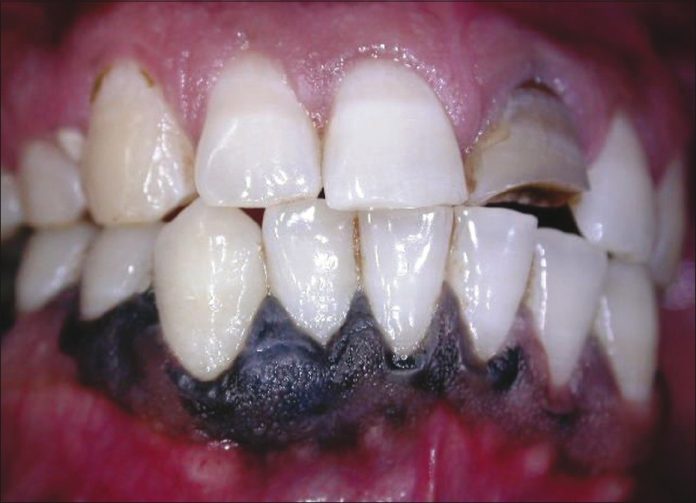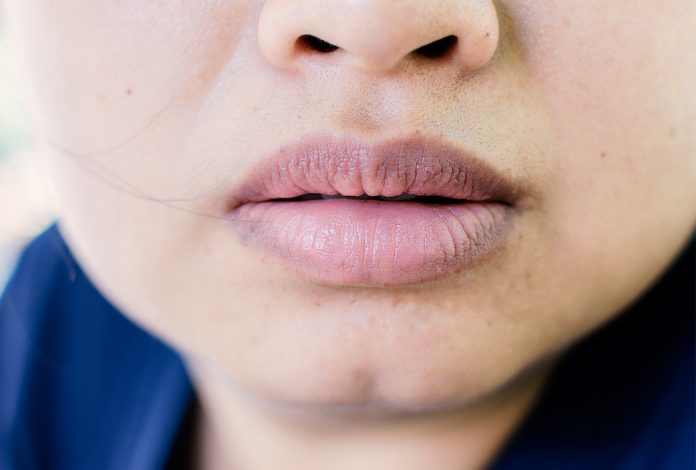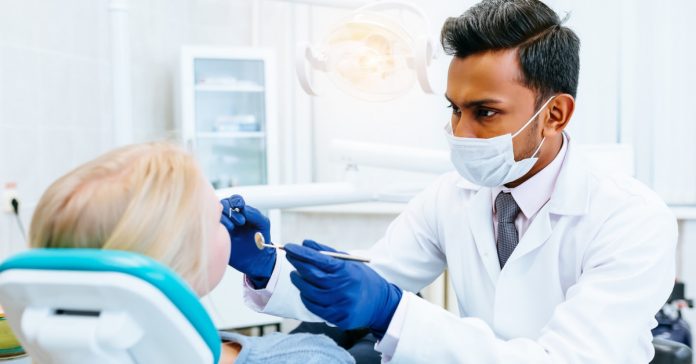
The gums have the function of covering the alveolar bone and act as support tissue, keeping the teeth fixed to the jaws. In addition, they protect the teeth from bacteria and foreign substances.
As with the color of teeth, not all people have the same tone of gums. Healthy gums are usually a uniform pink, or salmon pink. However, various factors can cause changes in the color of the gums such that they become redder than normal, white, sometimes with black spots. These changes are more of an aesthetic than a health problem.
What is gingival melanosis?
Gingival melanosis is the darkening of the gums as a result of excess melanin production. In the skin, the eyes, , and the gums, we have a pigment called melanin. It is responsible for giving these organs their color, while it protects the body from the sun’s rays. Although dark gums look bad, most of the time, they do not pose serious health problems.
Causes of gingival melanosis
Tobacco use: among the main causes of a change of tone are nicotine and tar, the components of cigarettes. According to the ADA, approximately 30% of people who have the habit of smoking suffer from this pathology of the gums, among others of greater severity. It can extend to second-hand smokers, who inhale tobacco smoke indirectly.
Melanoplakia: is higher concentration of melanin in the gums is generally hereditary and not usually a symptom of a health problem. In fact, blacks tend to have darker gums due to the increased genetic accumulation of melanin.

Amalgam: until recently, an amalgam was used as a reconstruction material for dental fillings. When it comes into contact with the gums, it produces so-called amalgam tattoos, which are dark and permanent stains on the gums.
Medications: black spots on the gums can be a side effect of taking some medications, such as contraceptives and some antidepressants.
Periodontal diseases: gingivitis and periodontitis are diseases that affect the gums and can cause them to darken. Tartar buildup under the gums also gives the gums a darkened appearance.
Treatments
Various treatments can improve and restore the color and health of the gums. A specialist will evaluate each case and determine the best option.
Micro-abrasion
The periodontist, using specific instruments, we can eliminate the superficial layer of the gums affected by dark coloration. Unsightly discoloration will be eliminated, revealing a more natural and rosy-looking gum. This very common treatment yields excellent results.
Removal of dark spots with a scalpel

The scalpel technique is best reserved for well-defined spots and not for a generalized darkening of the gums. This is a more invasive treatment than the previous one; it will require a postoperative period that is not particularly complicated.
Laser
The use of a laser to treat dark spots on the gums entails the removal of mucoceles. It may be considered a small oral surgery. Laser treatment is less invasive than using a scalpel, and bleeding will be reduced. Also, the recovery or post-operative time will be shorter.
Gum grafts
This technique is used to restore the healthy appearance of the gums. Grafts can be made with tissue from another piece of healthy gum, mucous tissue from the palate, or tissue from another area. Basically, the graft consists of adhering these tissues to the gum to obtain the desired color. The technique serves to restore the function of the gums in anchoring the teeth.
Contact us

The darkening of the gums is not irreversible. Currently, different treatments can be offered to eliminate excess gum pigmentation. At Channel Islands Family Dental Office, we can help you and eliminate these stains that affect your smile. Our dentists in Oxnard, Ventura, Port Hueneme, and Santa Paula will provide you with the best solution to end this problem. Schedule your appointment with us.








